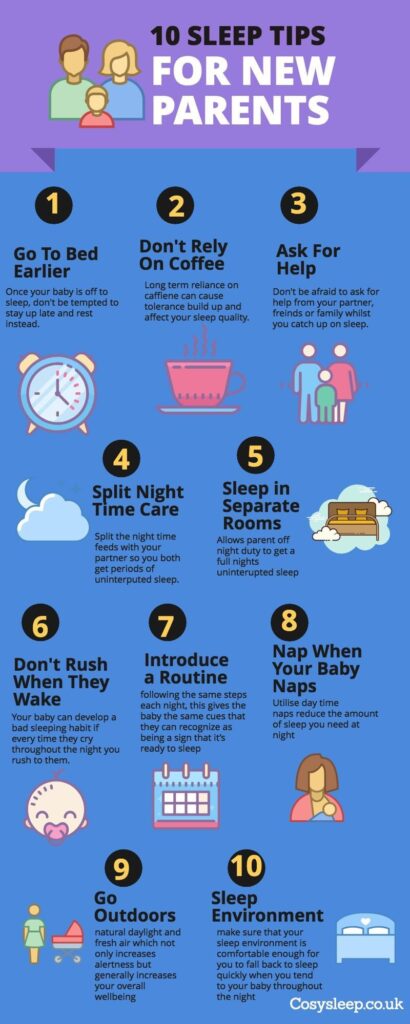Soothing techniques are essential for newborns as they help them feel safe, secure, and calm. Newborns can easily become overwhelmed by the new world around them, and soothing techniques can provide them with comfort and reassurance. There are various methods that parents can use to soothe their newborns, including swaddling, skin-to-skin contact, white noise, rocking, sucking, creating a calming environment, massage, and aromatherapy. Each technique has its own benefits and precautions, and it is important for parents to find what works best for their baby.
Key Takeaways
- Soothing techniques are important for newborns to help them feel safe and secure.
- Swaddling is a tried and tested method for calming babies and helping them sleep better.
- Skin-to-skin contact can help soothe newborns and promote bonding between parent and child.
- White noise can be used to help babies sleep better and feel more relaxed.
- Rocking and gentle movement can also help calm babies and promote sleep.
Swaddling
Swaddling is a technique that involves wrapping your baby snugly in a blanket to mimic the feeling of being in the womb. This can help your baby feel secure and calm, as it prevents their arms and legs from flailing around. Swaddling has been shown to reduce crying and promote better sleep in newborns.
To swaddle your baby, start by laying a blanket on a flat surface in a diamond shape. Fold down the top corner of the blanket to create a straight edge. Place your baby on their back with their head above the folded edge. Take one side of the blanket and bring it across your baby’s chest, tucking it under their opposite arm. Then, take the bottom corner of the blanket and fold it up over your baby’s feet. Finally, take the remaining side of the blanket and bring it across your baby’s chest, tucking it under their opposite arm.
While swaddling can be beneficial for newborns, there are precautions to take to ensure your baby’s safety. It is important to make sure that the swaddle is not too tight, as this can restrict your baby’s movement and potentially lead to hip dysplasia. Additionally, once your baby starts showing signs of rolling over, it is time to stop swaddling as it can increase the risk of suffocation.
Skin-to-Skin Contact
Skin-to-skin contact, also known as kangaroo care, involves holding your baby against your bare chest. This technique has numerous benefits for both the baby and the parent. It helps regulate the baby’s body temperature, heart rate, and breathing, and can also promote bonding and breastfeeding.
To do skin-to-skin contact with your baby, find a comfortable position where you can recline slightly and have your baby lying on your chest. Make sure that your baby’s head is turned to the side to keep their airway clear. You can cover both yourself and your baby with a blanket to keep warm.
While skin-to-skin contact is generally safe and beneficial, there are precautions to take to ensure your baby’s well-being. It is important to make sure that you are in a safe and secure position to prevent accidental falls. Additionally, if you or your baby are unwell or have any medical conditions that may affect skin-to-skin contact, it is important to consult with a healthcare professional before attempting this technique.
White Noise
| White Noise Metrics | Value |
|---|---|
| Definition | A type of noise that is produced by combining sounds of all different frequencies together |
| Uses | Helps people sleep, improves focus, reduces stress and anxiety |
| Types | White noise, pink noise, brown noise, gray noise |
| Sound Level | Between 50-65 decibels |
| Frequency Range | 20 Hz to 20,000 Hz |
White noise refers to a constant, soothing sound that can help drown out other noises and create a calming environment for your baby. It can mimic the sounds that babies hear in the womb and help them feel more secure. White noise has been shown to help newborns fall asleep faster and stay asleep longer.
There are different types of white noise that you can use, such as white noise machines, fans, or even apps on your phone. You can experiment with different sounds to see what works best for your baby. It is important to keep the volume at a safe level and place the source of white noise at a distance from your baby’s ears.
While white noise can be beneficial for soothing newborns, there are precautions to take to ensure your baby’s safety. It is important not to use white noise as a substitute for addressing your baby’s needs, such as hunger or discomfort. Additionally, it is important to monitor your baby’s response to white noise and adjust the volume or type of sound if they seem distressed.
Rocking
Rocking is a soothing technique that involves gently moving your baby back and forth. This motion can help calm your baby and promote relaxation. Rocking can be done in various ways, such as using a rocking chair, a baby swing, or simply holding your baby in your arms and swaying gently.
The benefits of rocking include soothing your baby to sleep, reducing crying, and promoting bonding between you and your baby. The rhythmic motion can help mimic the movements your baby experienced in the womb and provide them with a sense of familiarity and comfort.
While rocking can be beneficial for newborns, there are precautions to take to ensure your baby’s safety. It is important to make sure that the rocking motion is gentle and not too vigorous, as this can potentially harm your baby. Additionally, it is important to always supervise your baby when they are being rocked to prevent any accidents or falls.
Sucking

Sucking is a natural reflex for newborns and can be a soothing technique that helps them feel calm and secure. There are two main ways that sucking can be used to soothe babies: through pacifiers and breastfeeding.
Pacifiers are designed to mimic the shape of a nipple and can provide comfort for babies who have a strong sucking reflex. They can help soothe babies between feedings and promote better sleep. When using pacifiers, it is important to choose ones that are specifically designed for newborns and to clean them regularly.
Breastfeeding also provides comfort and soothing for babies. The act of breastfeeding releases hormones that help relax both the mother and the baby. It also provides essential nutrients and antibodies that support the baby’s growth and development.
While sucking can be beneficial for newborns, there are precautions to take to ensure your baby’s safety. It is important to introduce pacifiers at the appropriate age and to avoid using them as a substitute for feeding. Additionally, it is important to establish a good latch and breastfeeding routine to ensure that your baby is getting enough milk and to prevent any issues with nipple confusion.
Creating a Calming Environment
Creating a calming environment for your baby is essential for their well-being and can help promote relaxation and sleep. A calming environment should be free from excessive noise, bright lights, and other distractions. It should also be comfortable and cozy, with soft bedding and a temperature that is neither too hot nor too cold.
To set the mood in your baby’s room, you can use dim lighting or a nightlight to create a soothing ambiance. You can also play soft, gentle music or lullabies to help calm your baby. It is important to establish a consistent bedtime routine that includes activities such as bathing, reading, or singing to signal to your baby that it is time to sleep.
While creating a calming environment can be beneficial for newborns, there are precautions to take to ensure your baby’s safety. It is important to make sure that the room is well-ventilated and at a comfortable temperature. Additionally, it is important to follow safe sleep guidelines, such as placing your baby on their back in a crib with a firm mattress and no loose bedding or pillows.
Massage
Baby massage is a soothing technique that involves gently stroking and kneading your baby’s body. It can help promote relaxation, improve circulation, and relieve any discomfort or tension your baby may be experiencing. Baby massage can also provide an opportunity for bonding between you and your baby.
To do baby massage, start by choosing a time when your baby is calm and alert, such as after a bath or before bedtime. Use a gentle, baby-safe oil or lotion to lubricate your hands and then begin by stroking your baby’s body with light, rhythmic movements. You can also gently massage specific areas, such as the legs, arms, back, and tummy.
While baby massage can be beneficial for newborns, there are precautions to take to ensure your baby’s safety. It is important to choose a time when your baby is not hungry or too full, as they may be more irritable or uncomfortable. Additionally, it is important to use gentle and appropriate pressure during the massage to avoid causing any discomfort or injury.
Aromatherapy
Aromatherapy involves using essential oils to create a calming and soothing environment for your baby. Certain essential oils have been shown to have relaxing and therapeutic effects on both the mind and body. Lavender, chamomile, and mandarin are some examples of essential oils that are safe for newborns.
To use aromatherapy with your baby, you can add a few drops of essential oil to a diffuser or a warm bath. You can also dilute the essential oil with a carrier oil, such as coconut or almond oil, and gently massage it onto your baby’s skin.
While aromatherapy can be beneficial for newborns, there are precautions to take to ensure your baby’s safety. It is important to choose high-quality essential oils that are specifically labeled as safe for newborns. Additionally, it is important to use essential oils in moderation and to monitor your baby’s response for any signs of irritation or discomfort.
When to Seek Professional Help
While soothing techniques can be effective in calming newborns, there may be times when additional support is needed. It is important for parents to be aware of the signs that their newborn may need extra soothing support and to seek professional help when necessary.
Signs that your newborn may need extra soothing support include excessive crying that cannot be comforted, difficulty sleeping or staying asleep, and signs of distress or discomfort. If you have tried various soothing techniques and your baby continues to be inconsolable, it may be beneficial to consult with a healthcare professional, such as a pediatrician or a lactation consultant.
There are various resources available for finding professional help, such as local support groups, parenting classes, and online forums. It is important to reach out for support and not hesitate to ask for help when needed. Remember that every baby is unique and what works for one may not work for another, so it is important to find what works best for your baby.
Soothing techniques are essential for newborns as they provide comfort, security, and relaxation. Swaddling, skin-to-skin contact, white noise, rocking, sucking, creating a calming environment, massage, and aromatherapy are all effective methods that parents can use to soothe their babies. Each technique has its own benefits and precautions, and it is important for parents to find what works best for their baby. If additional support is needed, it is important to seek professional help and not hesitate to ask for assistance. Remember that every baby is unique and finding the right soothing techniques may require some trial and error.



